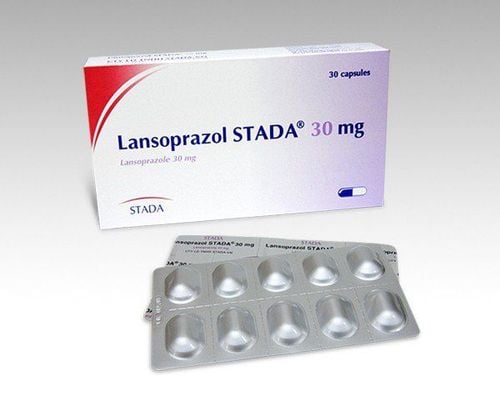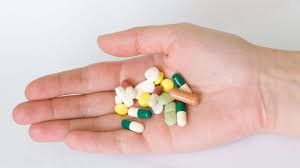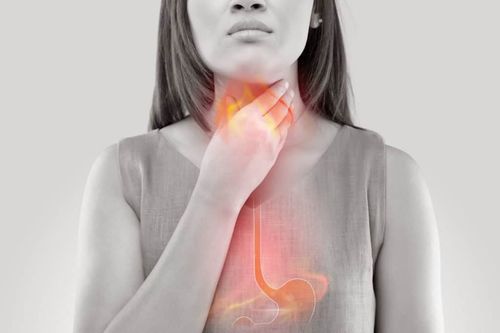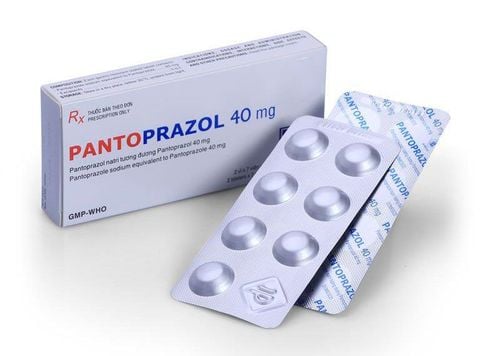This is an automatically translated article.
Posted by Doctor Mai Vien Phuong - Department of Examination & Internal Medicine, Vinmec Central Park International General Hospital
Patients who continue to have symptoms despite PPI therapy are considered to have refractory GERD, usually defined as the persistence of typical symptoms unresponsive to stable, twice-daily doses of PPIs. every day for at least 12 weeks of treatment. Up to 30% of GERD patients have treatment-resistant GERD.
Causes of failure of antacids (PPIs) with reflux esophagitis include:
5. Rapid metabolism
The cytochrome p450 2C19 isoform (CYP2C19) is the major enzyme responsible for metabolizing PPIs. The inherited genetic polymorphism of this enzyme determines the plasma concentrations of these drugs, and thus their ability to inhibit acid production. The relative effect of the CYP2C19 pathway on the metabolism of PPIs has been reported mainly with omeprazole and esomeprazole, followed by pantoprazole, lansoprazole and (least affected) rabeprazole.
Since metabolites of PPIs are not pharmacologically active, rapid metabolites may demonstrate less efficacy than PPIs. Conversely, poor metabolizers may show increased efficacy due to increased drug bioavailability. Metabolic expression was least common in Asian subjects, and relatively uncommon in Caucasians. Exposure to omeprazole, pantoprazole and lansoprazole was up to 5 times higher in poor metabolisers when compared with heavy metabolizers. A study by Furuta et al demonstrated a 45.8% cure rate in broad metabolizers with erosive esophagitis treated with lansoprazole 30 mg daily for 8 weeks compared with 84.6% in Poor metabolisers develop erosive esophagitis.
Furthermore, highly metabolisers with severe erosive esophagitis showed very low healing rates (16.7%). Accordingly, lansoprazole poor metabolisers had significantly higher lansoprazole blood levels 3 hours after dosing, and successfully treated patients had higher lansoprazole concentrations than failed patients. The esophageal healing rate of patients with erosive esophagitis treated with lansoprazole 30 mg daily for the homozygous broad-metaboliser, heterozygous extensively metabolizer, and poor-metaboliser was 57 %, 69% and 73% at 4 weeks and 77%, 95% and 100% at 8 weeks, respectively. No comment was made; however, on symptom relief in patients based on the CYP2C19 genotype.
Recently, Egan et al studied the effect of CYP2C19 genotype on gastric acid secretion, esophageal acid exposure and the occurrence of symptoms in 60 GERD patients on PPI therapy. While variant alleles predicted gastric acid suppression, there was no association between CYP2C19 genotype and exposure to esophageal acid or reflux-related symptoms. The second study and others suggest that in clinical practice, CYP2C19 genotyping will not be able to predict the clinical efficacy of PPIs. However, in a small subgroup of patients with severe erosive esophagitis, who are difficult to treat, the extensive metabolizing potential of PPIs should be entertained.

6. Increased secretion of acid at night
Nocturnal acidosis (NAB) has been arbitrarily determined in the presence of gastric pH below 4 for at least 1 hour during the night - in patients on PPI therapy. This physiological phenomenon was observed in 75% of all individuals (GERD patients as well as healthy individuals) taking PPIs twice a day. It has been hypothesized that NAB is the underlying pathophysiological mechanism responsible for refractory GERD. Early research demonstrated the presence of NAB in subjects receiving PPIs twice daily. However, correlation between this gastric phenomenon and patients who reported GERD symptoms was not attempted.
NAB was then suggested as a proxy for PPI failure. Despite the lack of any direct evidence that NAB is responsible for the continuation of symptoms in patients with PPI failure, one treatment approach includes the addition of a histamine-receptor antagonist- 2 (H 2 RA) at bedtime was given and quickly applied. However, despite the presence of NAB with all PPIs, acid reflux (90%) and the patient's symptoms (100%) were well controlled. Additional studies have shown that NAB events do not demonstrate a temporal relationship with reflux-related symptoms. Furthermore, 71% of GERD patients, not treated with a twice-daily PPI, experienced NAB, but only 36% had a correlation between symptoms and NAB events. Furthermore, there was no relationship between NAB and nocturnal heartburn.
In summary, the presence of NAB in PPI-treated patients is a physiological phenomenon that has not been demonstrated to correlate with clinical parameters, such as symptoms or erosive esophagitis. . Currently, there is no clinical evidence that NAB should be excluded in non-PPI-treated patients.
7. Gastroesophageal reflux disease
Gastroesophageal reflux disease (DGER) is the backflow of substances in the duodenum through the stomach and into the esophagus. This physiological event has been implicated as a possible cause of heartburn symptoms in patients unresponsive to PPI therapy.
It has been suggested that the bilirubin concentration in the reflux fluid is a suitable marker for DGER. The Bilitec 2000 fiber optic spectrophotometer is used to assess bilirubin levels in reflux esophagitis. Several studies have demonstrated a strong correlation between DGER and the severity of GERD. Vaezi and Richter showed DGER in 95% of patients with Barrett's esophagus, 79% of patients with erosive esophagitis, and only in 50% of patients with NERD. Furthermore, aggressive acid suppression with PPIs significantly reduced both acidity and DGER, presumably by reducing gastric volume.
In a recently published study, Tack et al. suggested that DGER is an important underlying mechanism in GERD patients who respond poorly to PPIs. The authors found that DGER was significantly more common (64%) than acid reflux (37%) in patients who continued to have GERD-related symptoms on standard or double dose PPIs. Patients with erosive esophagitis had a higher number of DGER episodes (35 vs 15.5) and a longer duration of DGER exposure (11.9% vs 6.3%) when compared with NERD patients . While the results were intriguing, the study did not demonstrate that DGER was a direct cause of patients' persistent symptoms on PPI therapy.

Overall, there is evidence of an association between DGER failure and PPI, but the extent of causality remains to be elucidated. This is compounded by the use of a marker-based technique (bilirubin) to evaluate bile reflux. It is not clear which ingredients in DGER may cause persistent heartburn symptoms.
Please dial HOTLINE for more information or register for an appointment HERE. Download MyVinmec app to make appointments faster and to manage your bookings easily.
Invite readers to refer to the following sections:
Causes of failure of antacids (PPIs) with reflux esophagitis (Part 1) Causes of failure of antacids (PPIs) with inflammatory bowel disease Reflux esophagitis (Part 2) Causes of failure of antacids (PPIs) with reflux esophagitis (Part 3) Causes of failure of antacids (PPIs) with reflux esophagitis (Part 3) Part 4)














